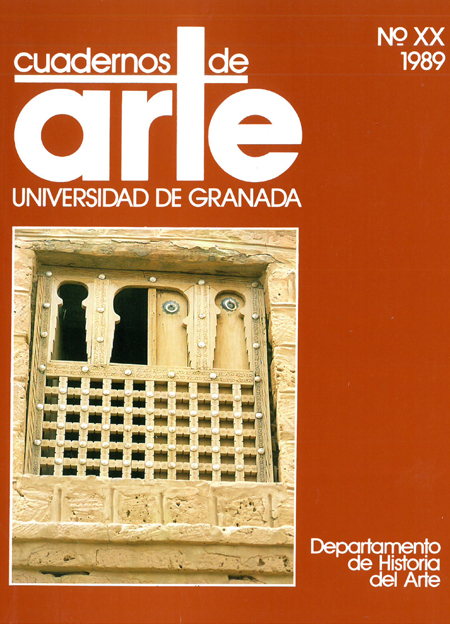La arquitectura de Tombuctú: influencias andaluzas y organización productiva
Abstract
The architecture of Timbuctoo: Andalusian influences and its productive organization.The urban structure of the town of Timbuctoo, situated in the Republic of Mali, is of great interest, especially its civil architecture. This is based on a perfectly rationalized plan which is completely different from the Sudanese architecture of the area and from the typical Islamic domestic housing pattern. A careful study of its characteristics leads us to suggest that there may well be a relationship between this architecture and that of Andalusia in the 16th century, particularly if we take into account the great number of Andalusian moriscos who formed part of the group of "Conquistadores" who crossed the Sahara at the end of the century to ocuppy these territories for Marroco. The rigid guild structure of the time and the periodical improvements and embellishments which were carried out allow us today to conduct a close analysis of thest! buildings, in spite of their being constructed of perishable materials.
Downloads
Downloads
Published
1989-11-10
How to Cite
López Guzmán, R., & Bigorra Rodríguez, J. (1989). La arquitectura de Tombuctú: influencias andaluzas y organización productiva. Cuadernos De Arte De La Universidad De Granada, 79–99. Retrieved from https://revistaseug.ugr.es/index.php/caug/article/view/10998
Issue
Section
Estudios
License
Los autores que publican en esta revista están de acuerdo con los siguientes términos:- Los autores conservan los derechos de autor y garantizan a la revista el derecho de ser la primera publicación del trabajo al igual que ser licenciado bajo una licencia Creative Commons que permite a otros compartir el trabajo con un reconocimiento de la autoría del trabajo y la cita de la fuente original, con un uso no comercial y siempre que no se hagan obras derivadas.
- Los autores pueden establecer por separado acuerdos adicionales para la distribución no exclusiva de la versión de la obra publicada en la revista (por ejemplo, situarlo en un repositorio institucional o publicarlo en un libro), con un reconocimiento de su publicación inicial en esta revista.
- Se permite y se anima a los autores a difundir sus trabajos electrónicamente (por ejemplo, en repositorios institucionales o en su propio sitio web) antes y durante el proceso de envío, ya que puede dar lugar a intercambios productivos, así como a una citación más temprana y mayor de los trabajos publicados (Véase The Effect of Open Access) (en inglés).


 ISSN-e: 2445-4567
ISSN-e: 2445-4567








